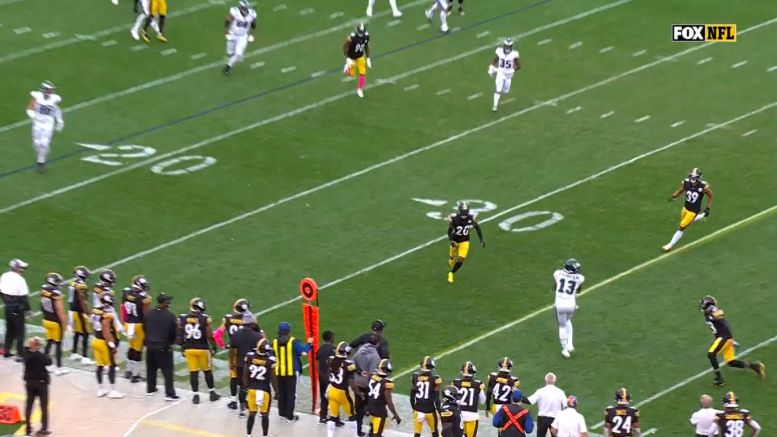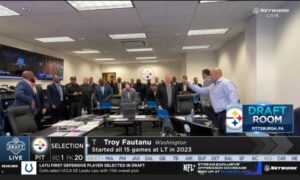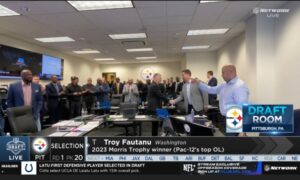Given the late stages of the game, it’s almost difficult to recall the fact that the Pittsburgh Steelers never trailed at all in the game on Sunday against the Philadelphia Eagles. In fact, from the two-minute warning of the second quarter on, they consistently held a lead after the two teams traded touchdowns—both of the Steelers’ coming from Chase Claypool.
Five minutes into the third quarter, the Steelers added two more touchdowns, building up to a 31-14 lead that felt insurmountable at the time and following the momentum of the game, but things didn’t exactly go smoothly from there, as the Eagles scored two more touchdowns in response, plus a two-point attempt, ultimately making it 31-29 before Pittsburgh was able to add one final touchdown late to separate and provide comfort.
And the sole reason that the Eagles were able to hang around as they did was because of their sudden and seemingly supernatural ability to convert plays on third down. It wasn’t even that they were doing a nice job of staying on schedule and putting themselves in manageable third-down situations. They had multiple conversions of 10-plus yards.
This led head coach Mike Tomlin to conclude that “their ability to convert third downs offensively, I thought, was a significant component of the game”, as he said in his post-game press conference. “Some of it was self-inflicted by us, and penalties and missed tackles and so forth, but you have to give those guys credit. They had a good plan, they had good execution of the plan, and that allowed them to maintain possession of the ball and keep us at by and stay in it”.
The Eagles converted 10 consecutive third-down opportunities after going three and out on their first two drives, beginning with a long 74-yard touchdown run by Miles Sanders on third and long. Carson Wentz’ four-yard score to Travis Fulgham in the fourth quarter that made it a one-possession game also occurred on third down.
The relative unknown of Fulgham did make a considerable number of plays for the Eagles. One could make a convincing argument that he was the best wide receiver in the NFL this past week—or at least had the best wide receiver performance of the week.
But what can the Steelers learn about themselves from this result that they can use to make changes and prevent this from continuing to happen? They went from having a middling third-down defense to one of the worst in the league, statistically, after just one game, now allowing 50 percent of opponents’ third-down attempts to be converted on the season. That has to change.








